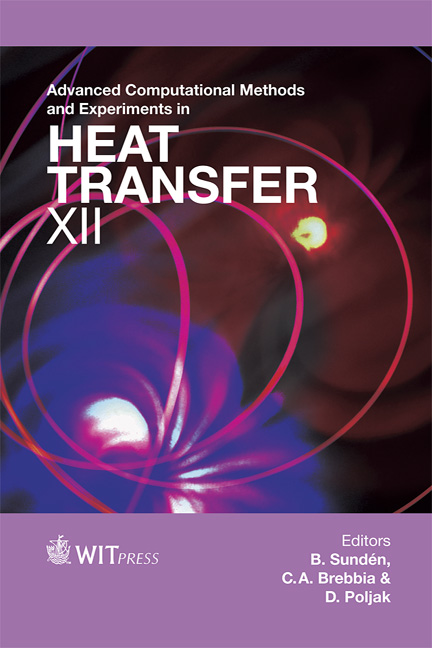Some Numerical Methods Of Thermal Dosimetry For Applications In Bioelectromagnetics
Price
Free (open access)
Transaction
Volume
75
Pages
10
Page Range
271 - 280
Published
2012
Size
973 kb
Paper DOI
10.2495/HT120231
Copyright
WIT Press
Author(s)
D. Poljak1, H. Dodig2, D. Cavka1 & A. Peratta2
Abstract
Some thermal dosimetry methods for the analysis of human exposure to high frequency (HF) electromagnetic radiation are reviewed in this work. The formulation is based on the bio-heat transfer equation. Calculating the distribution of specific absorption rate (SAR) inside the biological body provides an assessment of a related thermal response to HF electromagnetic fields. The temperature increase is obtained by solving the bio-heat transfer equation for different exposure scenarios via Boundary Element Method (BEM) and Finite Element Method (FEM), respectively. Some illustrative computational examples are presented in the paper. 1 Introduction The dominant and well-established biological effect due to human exposure to high frequency (HF) electromagnetic radiation is tissue heating [1–6]. Thermal effects are often defined in terms of energy deposition higher than the thermoregulatory capacity of the human body [3]. Consequently, adverse effects can occur when the total power absorbed by the body is large enough to cause protective mechanisms for heat control to break down, thus resulting in uncontrolled rise in the body temperature (hyperthermia). The hazardous field levels can be quantified analysing the thermal response of the human body exposed to HF radiation. The problem to be considered is by itself twofold. First, the rate of power deposition in tissue due to HF radiation has to be calculated; and second the related temperature distribution within the body has to be assessed. The electromagnetic analysis itself includes the incident
Keywords





